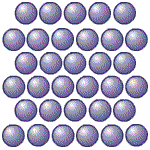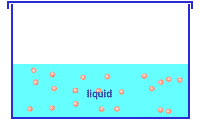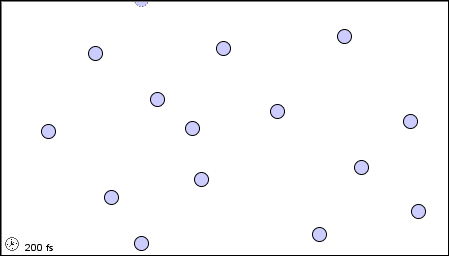How do molecules move as a solid, liquid, and gas?
1 Answer
Solids - vibrational (and rotational); moving very slowly.
Liquids - vibrational, rotational, and translational; moving quickly.
Gases - vibrational, rotational, and translational; moving very quickly.
Explanation:
Particles are always moving. No matter what. There is a certain point where they move so slowly it is considered minuscule, but they are in fact moving.
Thus, in solids, liquids, and gases, you can expect particles to move in a certain trend. That trend is average kinetic energy of the particles and the forces holding them together (attraction).
Solids
When you have little to no heat, the particles are moving very slowly, so slowly that they atomic attractions result in bonds that are difficult to break without adding energy. At this stage, this is known as a solid.
In a solid, the particles are vibrating. Only some solids have the ability to rotate. They cannot translate regardless.

Liquids
When you add energy (heat) to a solid, you "excite" the particles so much that they break their bond; their attraction is too weak to hold them together - yet strong enough to keep a form
As a result, you get a liquid.
In a liquid, the particles are not only vibrating (their bonds are not present but they still vibrate), but they are also rotating and translating. The particles are moving much faster than in a solid.

Gases
When you add even more energy to the substance, you increase the kinetic energy of those particles so much, that they lose their state form, becoming a gas.
In a gas, particles have vibrational, rotational, and translational motion, allowing them to "bounce" off of one another. Particles in a gas state move much faster than a liquid.

[This is a bad example but the only decent GIF I can find]
Hope this helps :)

